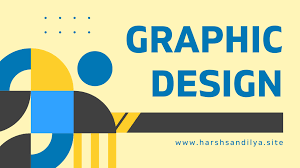The Power of Good Graphic Design
Graphic design is a powerful tool that combines creativity, communication, and aesthetics to convey messages and ideas visually. When done well, it has the ability to captivate audiences, evoke emotions, and leave a lasting impact. Good graphic design goes beyond creating visually pleasing images; it is about effectively communicating a message and enhancing the overall user experience.
Effective Communication
One of the primary goals of graphic design is to communicate a message clearly and effectively. Through the thoughtful use of typography, colors, imagery, and layout, designers can create visual compositions that capture attention and convey information in a concise manner.
Good graphic design ensures that the intended message is easily understood by the target audience. Whether it’s designing a logo that represents a brand’s values or creating an infographic that simplifies complex data, every element within the design serves a purpose in conveying information efficiently.
Aesthetic Appeal
Aesthetics play a crucial role in good graphic design. Visual elements such as color schemes, typography choices, and composition contribute to creating an appealing design that engages viewers on an emotional level.
A well-designed piece can elicit specific emotions or reactions from its audience. For example, a minimalist design with clean lines may evoke feelings of simplicity and sophistication, while vibrant colors combined with playful illustrations can create a sense of excitement and energy.
User Experience Enhancement
Graphic design is not limited to print media or static images; it also plays a significant role in digital experiences. User interface (UI) and user experience (UX) design are essential aspects of creating intuitive and engaging digital products.
Good graphic design in UI/UX focuses on creating seamless interactions, intuitive navigation, and visually appealing interfaces. By considering factors such as information hierarchy, visual cues, and user flow, designers can enhance the overall user experience and make digital platforms more enjoyable and user-friendly.
Brand Identity
In the business world, good graphic design is crucial for establishing a strong brand identity. A well-designed logo, consistent typography choices, and cohesive visual elements help create a recognizable brand that stands out from the competition.
Through strategic use of graphic design elements, companies can convey their values, personality, and unique selling points effectively. Good graphic design ensures that every touchpoint with the audience reflects the brand’s identity consistently, whether it’s through packaging design, website layout, or social media graphics.
The Bottom Line
Good graphic design is more than just making things look visually appealing; it is about effective communication, aesthetic appeal, enhancing user experiences, and establishing a strong brand identity. Whether in print or digital form, high-quality graphic design has the power to captivate audiences and leave a lasting impression.
5 Essential Tips for Effective Graphic Design: Simplicity, Color Use, Readability, Consistency, and Balance
- Keep it simple and minimalistic
- Use appropriate colors
- Ensure readability
- Maintain consistency
- Balance your composition
Keep it simple and minimalistic
When it comes to good graphic design, one important tip is to keep it simple and minimalistic. By stripping away unnecessary elements and focusing on the essential components, a design can achieve clarity and elegance. A simple and minimalistic approach allows for better communication, as the message becomes more prominent and easily understood. It also creates a sense of sophistication and timelessness. By embracing simplicity, designers can create designs that are visually appealing, impactful, and memorable.
Use appropriate colors
Using appropriate colors is a crucial aspect of good graphic design. Colors have the power to evoke emotions, convey messages, and create visual harmony. When selecting colors for a design, it is important to consider the context, target audience, and intended message. The right color palette can enhance the overall aesthetics of a design and make it visually appealing. Additionally, using colors strategically can help in creating visual hierarchy, highlighting important elements, and guiding the viewer’s attention. By understanding color theory and applying it effectively, designers can create designs that are not only visually pleasing but also communicate effectively with their intended audience.
Ensure readability
Ensuring readability is a crucial tip in good graphic design. No matter how visually stunning a design may be, it loses its effectiveness if the content is difficult to read. Selecting appropriate fonts, font sizes, and line spacing is essential to ensure that the text is legible and easily comprehensible. Additionally, considering contrast between text and background colors helps to improve readability. By prioritizing readability, designers can create designs that effectively communicate their intended message and engage the audience in a clear and accessible manner.
Maintain consistency
Maintaining consistency is a crucial tip in good graphic design. Consistency ensures that all visual elements, such as colors, typography, and layout, are unified throughout a design project. By establishing a consistent visual language, designers can create a cohesive and professional look that strengthens brand identity and enhances user experience. Consistency also helps in establishing recognition and familiarity among the audience, making it easier for them to connect with the design and understand the intended message. Whether it’s across different marketing materials or within a single design piece, maintaining consistency is key to achieving impactful and effective graphic design.
Balance your composition
Achieving balance in your graphic design composition is essential for creating visually pleasing and harmonious designs. Balance refers to the distribution of visual elements within a design, ensuring that no single element overpowers the others. By carefully considering the placement, size, and weight of each element, you can create a sense of equilibrium and stability. Whether it’s symmetrical balance, where elements are mirrored on either side of a central axis, or asymmetrical balance, where different elements are arranged in a way that creates a balanced overall composition, finding the right balance will help guide the viewer’s eye smoothly across the design and create a sense of visual harmony.

